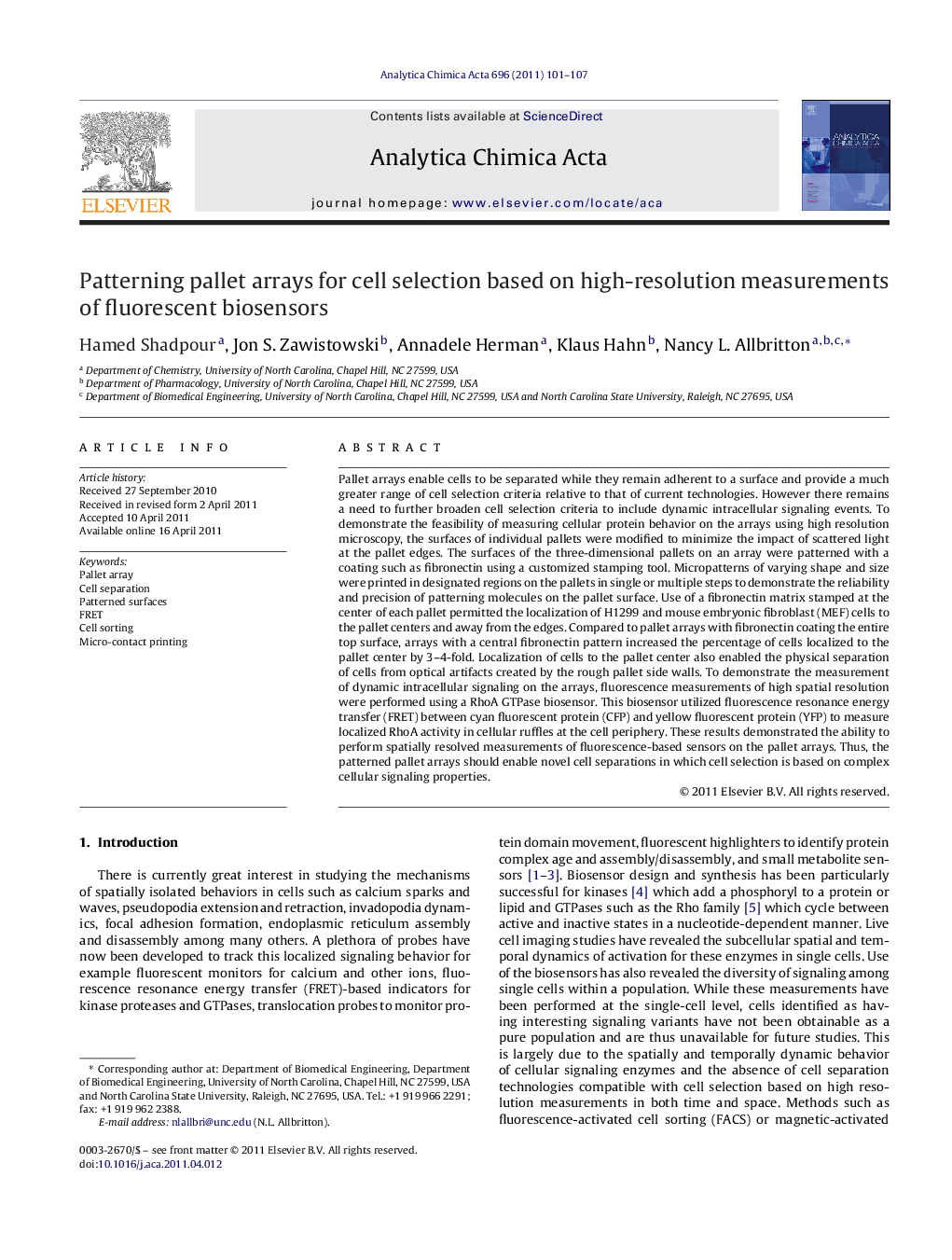| Article ID | Journal | Published Year | Pages | File Type |
|---|---|---|---|---|
| 1166807 | Analytica Chimica Acta | 2011 | 7 Pages |
Pallet arrays enable cells to be separated while they remain adherent to a surface and provide a much greater range of cell selection criteria relative to that of current technologies. However there remains a need to further broaden cell selection criteria to include dynamic intracellular signaling events. To demonstrate the feasibility of measuring cellular protein behavior on the arrays using high resolution microscopy, the surfaces of individual pallets were modified to minimize the impact of scattered light at the pallet edges. The surfaces of the three-dimensional pallets on an array were patterned with a coating such as fibronectin using a customized stamping tool. Micropatterns of varying shape and size were printed in designated regions on the pallets in single or multiple steps to demonstrate the reliability and precision of patterning molecules on the pallet surface. Use of a fibronectin matrix stamped at the center of each pallet permitted the localization of H1299 and mouse embryonic fibroblast (MEF) cells to the pallet centers and away from the edges. Compared to pallet arrays with fibronectin coating the entire top surface, arrays with a central fibronectin pattern increased the percentage of cells localized to the pallet center by 3–4-fold. Localization of cells to the pallet center also enabled the physical separation of cells from optical artifacts created by the rough pallet side walls. To demonstrate the measurement of dynamic intracellular signaling on the arrays, fluorescence measurements of high spatial resolution were performed using a RhoA GTPase biosensor. This biosensor utilized fluorescence resonance energy transfer (FRET) between cyan fluorescent protein (CFP) and yellow fluorescent protein (YFP) to measure localized RhoA activity in cellular ruffles at the cell periphery. These results demonstrated the ability to perform spatially resolved measurements of fluorescence-based sensors on the pallet arrays. Thus, the patterned pallet arrays should enable novel cell separations in which cell selection is based on complex cellular signaling properties.
► Precision stamping of the pallet arrays was demonstrated to pattern chemicals on the array surface. ► Pallet arrays patterned with fibronectin showed cell localization on to the patterned region. ► A fluorescent biosensor in cells was measured with high spatial resolution on pallet arrays.
